Are you gearing up for SOC 2 compliance but unsure where to start? Our no-nonsense guide provides the SOC 2 checklists you need. It covers the necessary steps for audit preparation, ensuring your business aligns with the critical Trust Service Criteria.
Our checklists are designed to streamline the complex SOC 2 process, allowing you to navigate the compliance terrain with confidence.
Key takeaways
- SOC 2 Compliance is a thorough, third-party audited evaluation based on AICPA’s five Trust Service Criteria (TSCs) that demonstrates an organization’s commitment to data security and helps to build client trust, avoid legal issues, and maintain reputation.
- Preparation for SOC 2 Compliance involves a detailed checklist including defining audit goals, assessing current security posture, implementing necessary controls from the SOC 2 controls list, and committing to ongoing security processes for continuous improvement.
- Maintaining SOC 2 compliance requires robust continuous monitoring, regular training of employees on compliance requirements, and frequent policy reviews to prevent and mitigate evolving security threats and enable adaptability to changing regulations.
Understanding SOC 2 compliance
Adherence to SOC 2 stands as a symbol of a service organization’s dedication to protecting sensitive customer data and acts as a defense against possible incidents involving the compromise of such data. Achieving SOC 2 compliance includes several benefits. It:
- Builds trust among clients
- Distinguishes your company by upholding standards for secure and private handling of information
- Helps protect your organization from unwanted legal and monetary penalties
- Preserves the integrity of your business’s image
To obtain a SOC 2 report, a service organization must pass through rigorous scrutiny from an independent audit firm that assesses its internal organization controls with respect to the five Trust Service Criteria set forth by AICPA.
Think of this process as preparing for an arduous trek: You would need comprehensive documentation (akin to having detailed trail maps), robust security controls (equivalent to durable gear), and the expertise offered by the audit firm (like having the guidance of an experienced hiker). This extensive auditing delves into both operational governance procedures and demands solid evidence showing consistently effective control measures over time.
Key Components of SOC 2 compliance: Trust Services Criteria
SOC 2 compliance is based on a robust structure designed to scrutinize key elements of your company’s controls. The framework of SOC 2 compliance consists of five essential Trust Service Criteria (TSCs):
- Security
- Availability
- Processing integrity
- Confidentiality
- Privacy
These TSCs strengthen your cybersecurity measures and enhance the trust that clients and stakeholders place in your organization.
This security infrastructure requires detailed records that demonstrate your organizational control environment. This includes comprehensive information, such as the roles of personnel, data management processes, underlying policies, and the physical and digital resources employed.
Also critical to SOC 2 Compliance are the prescribed preventative measures, including access controls and strategies for incident response and continuous performance evaluation based on the relevant Trust Service Criteria.
Lastly, but importantly, when constructing a security framework that is precisely tailored to the services provided or offered—selecting the applicable TSCs and explaining any exclusions—it’s essential to ensure that the scope of coverage is adequate for addressing both the risks related to commercial operations and those associated with the cyber threat landscape.
Important note: Security is the only TSC required in any SOC audit because it not only sets overarching security standards for your company, but also overlaps with the others: setting security controls for availability, confidentiality, privacy, and processing integrity.
Your SOC 2 checklist: Seven steps to compliance
It can be challenging to understand the first steps when starting the SOC 2 process. Businesses implement and maintain SOC 2 in a variety of ways. To help, we’ve broken down the basic process to tackle SOC 2 compliance checklist. This can all be accomplished manually or you can save time and resources by selecting a SOC 2 compliance automation partner.
✅ 1. Choose objectives and TSCs
The first action item on your SOC 2 checklist involves the purpose of your SOC 2. Before diving into controls, an organization needs to determine the objective of its SOC 2 report and choose relevant TSCs.
There are two types of SOC 2 reports, Type 1 and Type 2. Businesses typically start with a Type 1 and build up to a Type 2. We recommend this order for our own clients.
How do you determine which trust services principles to test for?
The type of information and data stored or transmitted by a business should determine the applicable trust services criteria. SOC 2 encompasses 5 TSCs:
- Security
- Privacy
- Processing Integrity
- Confidentiality
- Availability
The only required criterion is security.
✅ 2. Perform a gap analysis and develop a remediation plan
A compliance team examines the practices and procedures a business has in place and compares the security posture to SOC 2 best practices to identify gaps. Based on the gaps found (i.e. the results of a gap analysis or readiness assessment), a strategic remediation plan is set to tackle SOC 2 in the most efficient way possible.
✅ 3. Implement stage-appropriate controls
Enterprises need drastically different controls to demonstrate SOC 2 compared to startups. From logging and monitoring to HR tasks and vendor management, a compliance team can identify ways to save time and money by implementing the correct tools and processes.
✅ 4. Perform a risk assessment
When control implementation is about 80% complete, the compliance team performs a risk assessment. As a crucial part of the audit, the risk assessment understands any potential risks an organization incurs through growth, geography, or outside information security best practices.
✅ 5. Prepare for your audit
After the risk assessment mitigation and acceptance process, the business needs to prepare for an audit.
How do you prepare for a SOC 2 audit?
While this means gathering evidence of implemented controls, it also means preparing an internal team to answer questions and work with auditors throughout the audit process.
How do you determine your company’s readiness for a SOC 2 audit?
After your team collects and compiles evidence for auditors and assesses and accepts risk after the gap analysis/SOC 2 assessment, the organization is ready for audit.
How do you choose an auditor?
Auditors performing SOC 2 audits must be from firms or agencies that hold accreditation from the American Institute of Certified Public Accountants (AICPA), ensuring they have the requisite skills and adhere to established professional guidelines.
It’s essential that your selected auditor brings experience in conducting SOC audits, preferably within the context of your particular industry sector. This depth of knowledge allows them not just to evaluate compliance effectively, but also to offer insights into best practices relevant specifically to your field. Engaging in multiple discussions with potential auditors is advisable in determining their capability and compatibility with your organization, contributing positively towards an efficient audit process.
During this selection stage, there are several important factors you should consider, including:
- The auditor’s grasp on specifics related to your business sector
- A willingness toward teamwork throughout the auditing process
- Favorable testimonials from previous clients who experienced their services.
✅ 6. Execute the audit
SOC 2 audits last between 2 weeks and a couple of months. This depends on the number of questions or follow-ups from the auditors. Though businesses cannot technically fail a SOC 2 report, many will want to correct discrepancies to avoid a poor report.
✅ 7. Maintain and monitor compliance over a 12-month period
SOC 2 audits need to be performed on an annual basis. We recommend that our clients set up integrations to automatically collect evidence and monitor practices over time. This helps avoid heavy time commitments from team members and continues to secure information.
Maintaining SOC 2 compliance: Best practices and strategies
Maintaining SOC 2 compliance is an ongoing effort, and it hinges on the establishment of a strong continuous monitoring strategy. This ensures that controls remain effective and adhere to compliance standards over time. Continuous monitoring gives organizations immediate insight into their security status, allowing for quick detection of potential issues.
When automating SOC 2 compliance checks with tools like Thoropass:
- Compliance workflows are streamlined, cutting down on manual tasks
- The journey towards obtaining SOC 2 certification is expedited
- The effectiveness of robust continuous monitoring practices is bolstered
- Surveillance becomes quicker and free from human error
- It reduces the risk of missing critical details
- Incident response times are significantly improved
Establish a continuous monitoring plan
To ensure SOC 2 compliance is consistently maintained, it should be treated as an ongoing process demanding regular attention and care.
Regular surveillance of security controls’ effectiveness is essential in supporting constant adherence to SOC 2 standards. This process entails routinely evaluating how well these measures are functioning through quality assurance testing that checks conformity with regulatory mandates as well as internal procedures—making continuous compliance monitoring indispensable for upholding year-round compliance.
Train employees on compliance requirements
Just as a skilled team is essential for the success of any expedition, knowledgeable employees are key to maintaining SOC 2 compliance. Establishing and adhering to a security awareness training policy and procedures that outline mandatory annual training for all pertinent staff members ensures they stay informed about the most recent security principles.
Your organization’s SOC 2 security awareness training program should be customized to fit the unique requirements of your service organization, with a focus on important secure practices. It’s vital that there’s an ongoing refinement of this policy so it continues to align with current SOC 2 standards and keeps up with changes in compliance obligations.
Review and update policies regularly
Maintaining up-to-date policies is as critical as having the latest gear for an adventure. That is why SOC 2 change management is essential. Frequently reviewing and revising your policies at least once per year to stay in step with SOC 2 compliance standards ensures that they effectively protect against contemporary security threats.

Recommended for you
Compliance and risk management go hand-in-hand
Learn more about how to Implement policies, procedures, risk assessment and monitoring
Risk management policies need to be structured as overarching documents centered on goals rather than specific technologies or vernacular that may become obsolete quickly. Consistently refreshing these policies is key for confronting and reducing new security risks that are constantly arising. Establishing a consistent policy review timetable allows your organization to ensure ongoing alignment with evolving SOC 2 directives.
Overcoming common SOC 2 compliance challenges
Just as embarking on an adventure entails navigating through obstacles, achieving SOC 2 compliance is fraught with its own set of difficulties. Let’s look at some of the common challenges:
Time and resource constraints
Obtaining SOC 2 compliance is a rigorous process that can heavily tax your company’s resources, including staff time and monetary outlay. It resembles setting off on an extended journey demanding meticulous preparation and the allocation of resources. It’s essential to recognize the perennial character of SOC 2 compliance, which demands yearly maintenance efforts. This underscores the need for long-term resource management.
It’s worth noting that SOC 2 Type 1 offers a quicker and cost-effective approach for immediate proof of compliance, while Type 2 assesses effectiveness over time. Learn more about SOC 2 Type 1 versus Type 2 here.
Balancing cost and security needs
Finding the right balance between expenses and security mandates for your SOC 2 compliance initiative can be tricky. Smaller enterprises and new ventures can find SOC 2 compliance within reach by harnessing automation technology, which cuts down on both the duration and expenditure associated with meeting compliance standards.
Multiple elements impact SOC 2 compliance cost, including:
- The scale of your organization
- Selected Trust Service Criteria
- Operational intricacy
- The choice between undertaking a SOC 2 Type 1 or Type 2
Adapting to changing regulations and standards
Similar to the way one might adjust a journey’s path in response to changing weather or unexpected obstacles, SOC 2 compliance requirements are not static. Again, compliance support like Thoropass can be your experienced guide here: By incorporating compliance automation into regular monitoring processes, organizations can effectively manage and minimize risks through persistent surveillance of newly introduced or revised regulations.
In order to stay aligned with shifting regulations and standards, it is crucial for businesses to routinely check the AICPA website for current information, assess their compliance posture regularly, and encourage cross-departmental cooperation. Embracing flexibility and responsiveness is essential for proficiently steering through the dynamic realm of SOC 2 compliance.
In summary: Consistent dedication is key
We’ve navigated the intricate landscape of SOC 2 compliance, grasping its significance, readying ourselves for it, accomplishing a fruitful audit, preserving compliance post-audit, and surmounting prevalent hurdles. Adherence to SOC 2 is not merely an objective to reach. Rather it symbolizes an ongoing commitment dedicated to securing your customer’s sensitive data while fostering trust with all involved parties.
Keep in mind that attaining and sustaining SOC 2 adherence doesn’t represent a final destination. It demands consistent dedication and agility in adapting to evolving regulations and benchmarks. Prepare yourself for continued vigilance!
More FAQs
What are the two types of SOC 2 reports?
There are two variations of SOC 2 reports, namely Type 1 and Type 2. The former provides a description at a specific moment, whereas the latter encompasses an interval of time and evaluates the efficacy of controls.
What are the five Trust Service Criteria (TSCs) covered by SOC 2?
SOC 2 encompasses the evaluation of service providers’ controls and processes through five Trust Service Criteria, which include security, availability, processing integrity, confidentiality, and privacy. These criteria are crucial in assessing the trustworthiness of service operations.
What is the purpose of a gap analysis in SOC 2 compliance?
When control implementation reaches approximately 80% completion during the SOC 2 process, a risk assessment is conducted to effectively identify and mitigate potential risks.
How often should SOC 2 audits be performed?
You should perform SOC 2 audits annually to ensure ongoing compliance and security.
How does SOC 2 differ from SOC 1?
SOC 2 and SOC 1 are both auditing standards developed by the American Institute of Certified Public Accountants (AICPA), but they serve different purposes. SOC 1 reports focus primarily on a service organization’s internal control over financial reporting.
These are important for clients and auditors concerned with the financial statements of the user entities that rely on the services of the organization being audited.
In contrast, SOC 2 reports are more concerned with an organization’s non-financial reporting controls as they relate to security, availability, processing integrity, confidentiality, and privacy of a system. SOC 2 is designed to provide assurance on the controls at a service organization relevant to the Trust Services Criteria, which is not specifically focused on financial reporting.
RECOMMENDED FOR YOU
Compliance isn’t just required—it’s good business
With our guide to SOC 2 as a business accelerator, find out how you can better leverage compliance in your growth strategy.
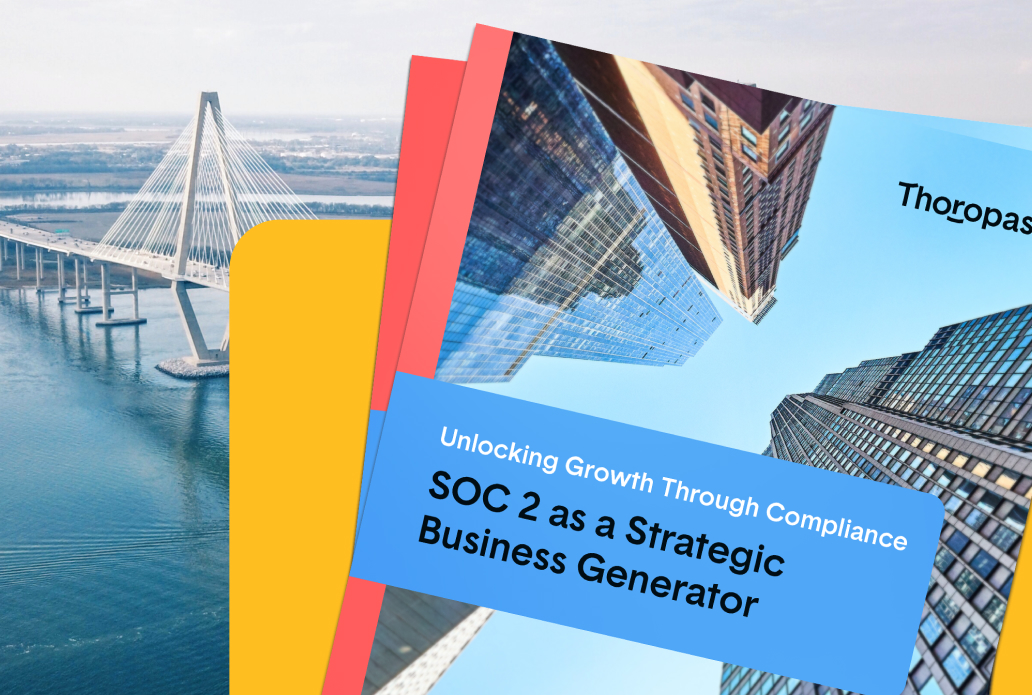
Related Posts
Stay connected
Subscribe to receive new blog articles and updates from Thoropass in your inbox.
Want to join our team?
Help Thoropass ensure that compliance never gets in the way of innovation.

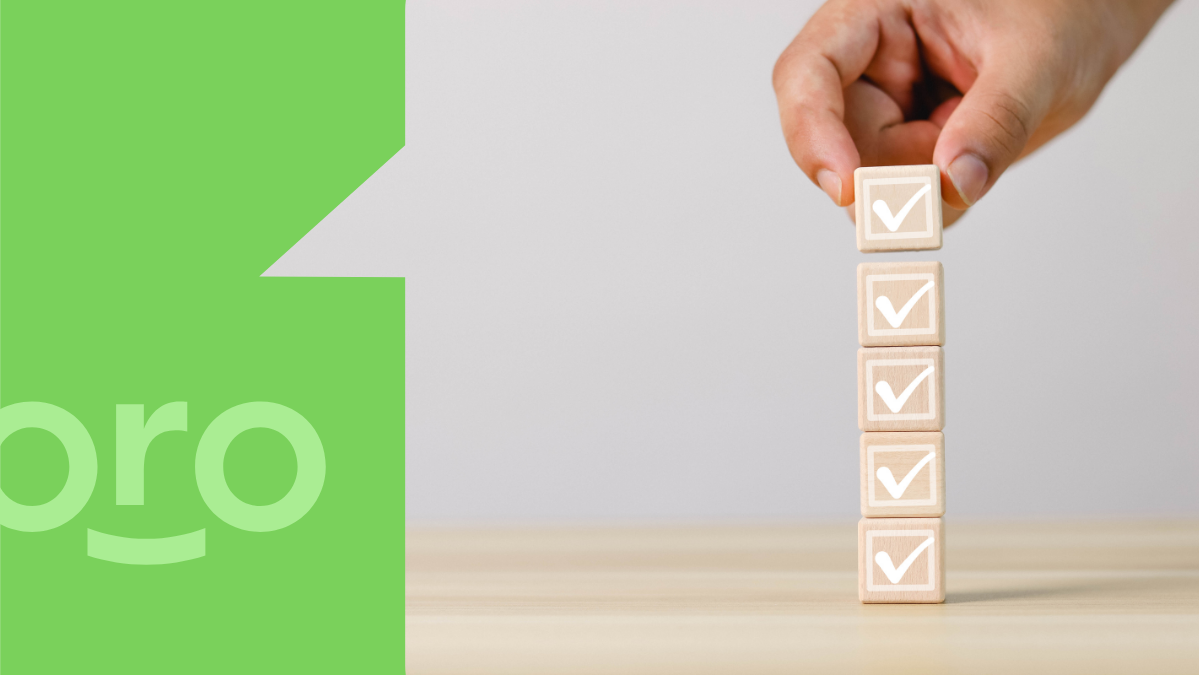


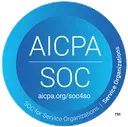


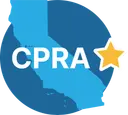






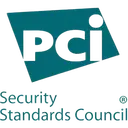
.png)